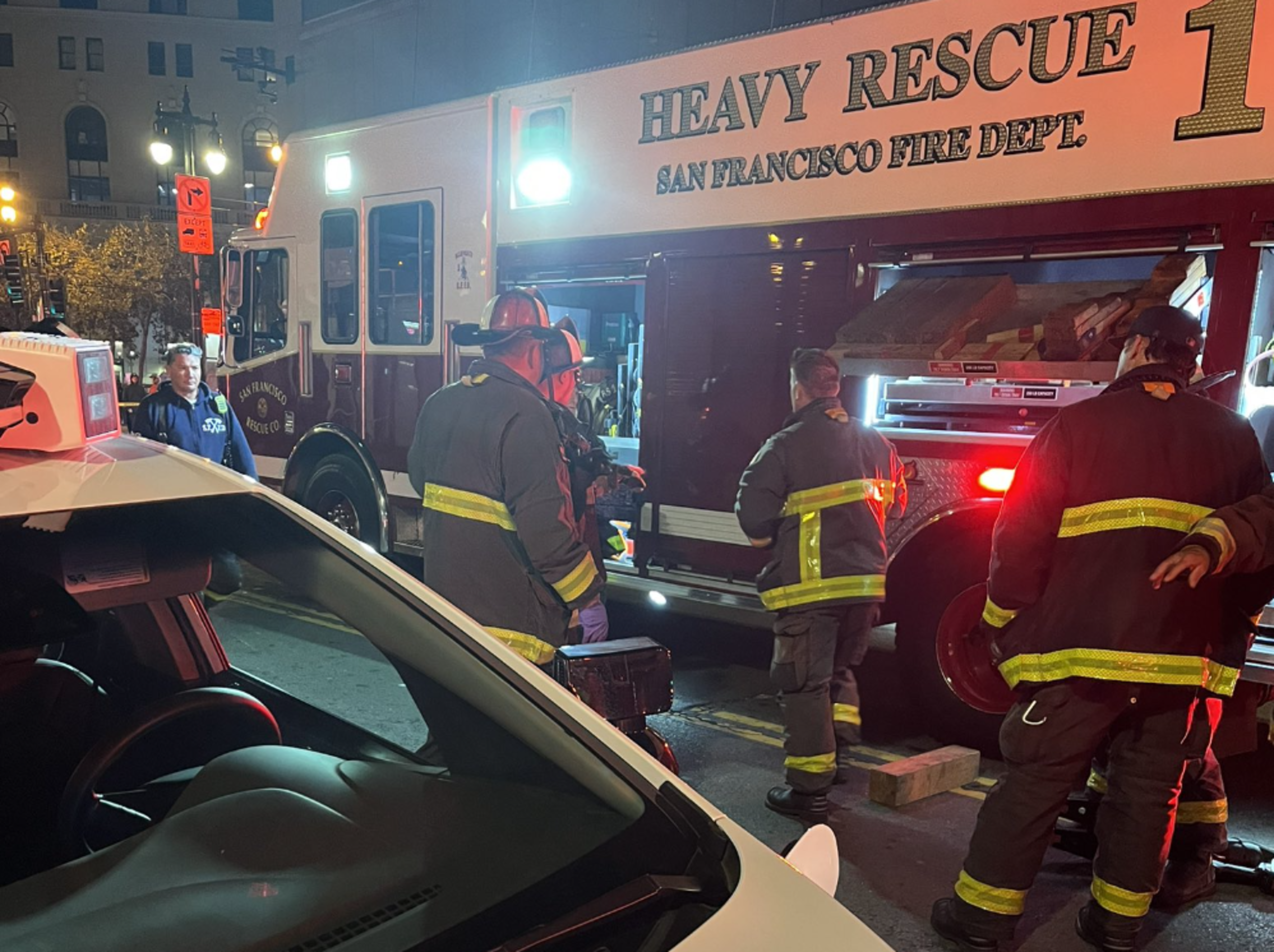Cruise has been told to stop taxi services in San Francisco by the DMV—effective immediately as of Tuesday morning.
“Public safety remains the California DMV’s top priority, and the department’s autonomous vehicle regulations provide a framework to facilitate the safe testing and deployment of this technology on California public roads,” the Department of Motor Vehicles statement said. “When there is an unreasonable risk to public safety, the DMV can immediately suspend or revoke permits. There is no set time for a suspension.”
UPDATE: Cruise Hid Video of Woman Being Dragged Along San Francisco Street, DMV Says
A Cruise statement said the DMV told them at 10:30 a.m. that their driverless permits had been suspended.
“Ultimately, we develop and deploy autonomous vehicles in an effort to save lives,” the General Motors-backed company said in the statement.
The Standard tried to hail a Cruise driverless taxi at 10:50 a.m. Tuesday but was greeted with a message that said demand was high and no cars were available.
READ MORE: San Francisco Officials Praise DMV Move to Suspend Cruise

Woman Stuck Under Cruise Incident
Cruise linked the DMV suspension with an Oct. 2 incident where a woman was struck by a human driver in a hit-and-run before being thrown into the path of the AV in Downtown San Francisco.
“The AV braked aggressively before impact and because it detected a collision, it attempted to pull over to avoid further safety issues,” Cruise added. “When the AV tried to pull over, it continued before coming to a final stop, pulling the pedestrian forward. Our thoughts continue to be with the victim as we hope for a rapid and complete recovery.”

“The California DMV today notified Cruise that the department is suspending Cruise’s autonomous vehicle deployment and driverless testing permits, effective immediately,” the statement added. “The DMV has provided Cruise with the steps needed to apply to reinstate its suspended permits, which the DMV will not approve until the company has fulfilled the requirements to the department’s satisfaction. This decision does not impact the company’s permit for testing with a safety driver.”
San Francisco vs. Robotaxis

In early 2022, Cruise started taking passengers on driverless rides. Eager techies embraced the moment, and some safe streets advocates championed the vehicles for providing a slower, law-abiding road option, claiming that the cars could never drive drunk.
In California, robotaxi companies are jointly regulated by the Department of Motor Vehicles and the California Public Utilities Commission, meaning city officials have minimal control over service expansions. The self-driving car companies flew through regulatory hurdles, winning the state’s approval to operate on San Francisco streets with relative ease.
But the road to expansion has proved bumpy at times. Cruise and Waymo cars have been involved in a number of traffic incidents throughout San Francisco streets—ranging from a wayward robotaxi rolling into wet cement to more serious incidents involving emergency vehicles.
Videos of Cruise and Waymo cars stalled on San Francisco streets have gone viral; police and firefighters have had to smash robotaxi windows to get them to move out of emergency scenes; and some activists have even taken to placing traffic cones on the robotaxis’ hoods, to literally stop them from moving. One individual was recently spotted raging against the machines with a hammer.
In September, it transpired a man was killed by a Muni bus after a dispute between the San Francisco Fire Department and Cruise over an August incident where an AV allegedly blocked an ambulance transporting the man to hospital.
‘Better Late Than Never’

“Better late than never,” said Board of Supervisors President Aaron Peskin, reacting to the suspension. “San Francisco has long held that Cruise vehicles were not ready for prime time and the state should never have allowed their unlimited deployment in the first place.”
Adam Wood, the secretary-treasurer at San Francisco Fire Fighters Local 798, a union representing city firefighters, said the forced halving of Cruise’s fleet in September was a sign the DMV had concerns about the driverless car company.
“I guess this indicates that they remained concerned and haven’t seen the fixes they needed to see,” Wood said, adding that Local 798 is relieved at the news. “What we have been asking for, including at the CPUC hearings whether to restrict the hours of operation and the number of vehicles, is that there is a problem with these vehicles about how they respond to emergency vehicles. They freeze, they block our access, they drive right into the middle of emergency scenes and freeze and until they come to a solution, put the brakes on this project.”
“This is a clear victory for direct action and the power of people getting in the street,” said a spokesperson for Safe Street Rebel, the group that claims responsibility for putting cones on the hoods of AVs. “This is a good and necessary step forward, but the job’s not done. Until then, the cones will continue.”
Coincidentally, the Teamsters staged an anti-Cruise protest at the company’s San Francisco headquarters 90 minutes before the DMV’s announcement. The protest, primarily addressing safety and labor concerns, counted Supervisors Shamann Walton and Connie Chan in attendance.
“We’re not gonna stop until they’re 100% off the street,” said Tony Delorio, Teamsters Local 665 secretary-treasurer, at the protest.
